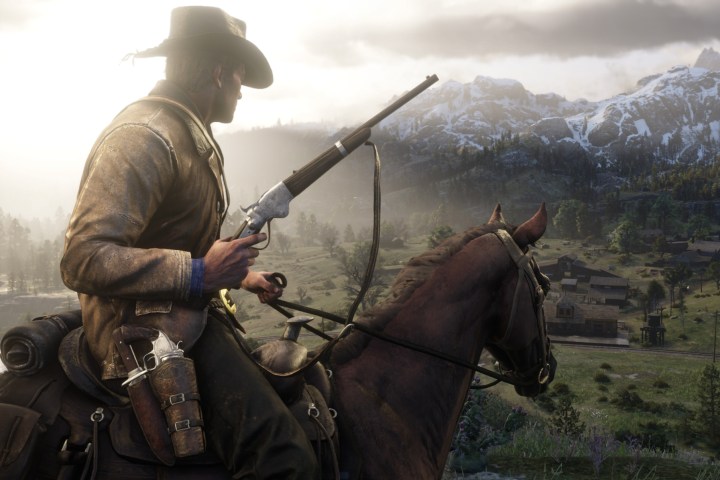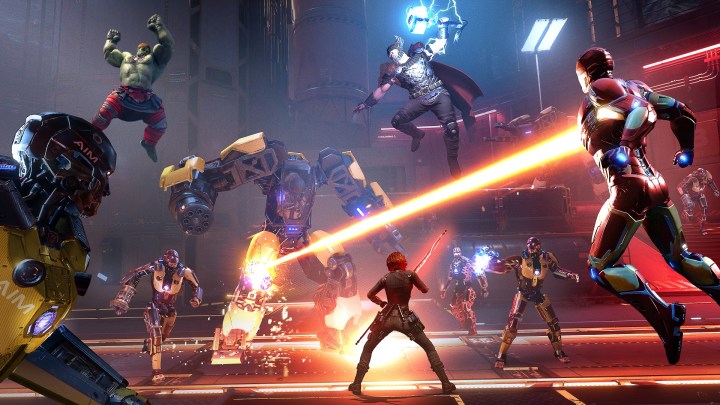You only have to look at how video games have evolved over the decades to know that they are becoming more and more expensive to make. Unless we’re talking about indie games, we’re long past the days of simple pixel art characters running through a handful of stages with repeating patterns, a limited color palette, and short, looping music. Games have ballooned into massive worlds where each strand of a character’s hair is detailed, dynamic lighting fills the landscape, and everything is backed by professional voice actors and orchestral arrangements.
Aside from the few indie developers who manage to hit it big on just a shoestring budget, most big games cost hundreds of millions of dollars to create. The more ambitious a game is, and the more staff required to make it, the higher the cost becomes. If you’ve never considered how expensive games are to make, some of these numbers will undoubtedly be a shock, and yet that’s the price of creating and marketing a modern game. Before complaining about a minor bump in game prices, see just how much money is sunk into the most expensive games ever developed.
Further Reading
How price is estimated
Before diving right into the list, we need to be clear on what exactly is included in a game’s total cost. For most games, we usually don’t get a solid dollar amount for development, if we get a number at all. Most of the time it is given in a range, which we will break down on a case-by-case basis. We’re also including the marketing costs associated with each game. Marketing a game can be, and often is, more costly than the game itself. Finally, we have adjusted all the dollar amounts to the same inflation rate for consistency. A dollar ten years ago isn’t worth the same as a dollar today, after all. All that out of the way, let’s get started.
Red Dead Redemption 2 — $379 million to $550 million

Just take one look at this game and try and deny that it isn’t the most expensive game ever made. No, it isn’t Rockstar’s most successful game, and it hasn’t had the legs of its flagship series Grand Theft Auto, but Red Dead Redemption 2 is almost unbelievable to see in motion. The characters are immaculately detailed, performances and animations are as lifelike and fluid as the best films are, the story is lengthy and engrossing, and the world is one of the biggest there is. No corners were cut with this game, from footprints showing up in the mud to the infamous feature of horse testicles reacting to the weather. Oh, and then there’s the entire ongoing online portion of the game too.
The development cost alone ranged from $170 million to $240 million. Part of that massive number is no doubt due to the game getting multiple delays, which naturally added more cost to the project. What is truly astounding is how much marketing budget was given to the game. Possibly eclipsing the development budget, an estimated $200 million to $300 million was spent marketing this love letter to the Western genre, giving us the final cost above once adjustments were made.
Read our full Red Dead Redemption 2 review
Star Citizen — $320 million-plus

Okay, so technically Star Citizen isn’t a released game quite yet, but some parts are playable, and the amount of money behind this crowdfunded title is just too big to ignore. Pitched as a successor to the cult classic Freelancer, this space exploration, trading, and combat simulation game has made some big promises to live up to. Combining gameplay from FPS titles, MMOs, flight sims, and more, all set in a persistent universe of untold scale and at a level of detail no other space sim has attempted, it’s hard to imagine a scenario where this game wouldn’t cost hundreds of millions of dollars.
Star Citizen began production over a decade ago, in 2010, and later launched a very successful Kickstarter in 2012 where the team raised more than $2 million. Originally, the game was promised to launch in 2014, but that date obviously came and went, and we still have no idea when to expect the finished product. Even after the initial crowdfunding ended, though, developers Cloud Imperium Games still accepted donations, as well as sold content in the game itself, to keep raising money. The community has, at least as of June 2020, contributed over $300 million to the project, plus more invested from other sources. That leaves the development cost, assuming they use all that budget to make the game, at around $320 million, with just a few million more estimated for marketing.
Cyberpunk 2077 — $316 million

Oh boy, here’s a hot one. The most recent game on this list, Cyberpunk 2077 has been talked to death since its disastrous launch, and for good reason. The game was buggy, glitchy, and had fundamental flaws with things like A.I. to deal with, and that’s assuming you’re playing on a powerful PC. The console launch was so bad that Sony pulled it from its digital stores, and it has yet to come back despite the developers attempting to patch it. Even after multiple delays, most gamers agree that it should’ve just taken another few months, or maybe a year, to actually deliver the experience promised, and yet a staggering amount of money was spent giving us the version we ended up with.
Despite what some people think, Cyberpunk 2077 didn’t actually begin development when it was first announced in 2012, but rather started preproduction in 2016. From there, things ramped up, but as we all now know, development was far from smooth. There are tons of stories and articles out there detailing the tortured development, management, and overall handling of this game, but in the end, the game launched with the final development budget of $174 million. The marketing budget nearly matched that at $142 million, which makes sense since it was hard not to be aware of this game prior to release. Despite that high cost and seemingly bad reception, Cyberpunk 2077 still managed to be one of the bestselling games of 2020.
Call of Duty: Modern Warfare 2 — $298 million

Jumping back to the 360 and PS3 generation, we come to what remains as the most expensive game in the long-running Call of Duty series, Call of Duty: Modern Warfare 2. After the massive hit that was Modern Warfare, Activision spared no expense in pumping the sequel full of cash to capitalize on the previous game’s success. It already had World at War coming the following year but used that time to craft a perfect follow-up to what people loved about the first Modern Warfare, only cranked up to the maximum. The campaign was more bombastic, the multiplayer deeper and with more hooks to keep you addicted, and, of course, the obligatory “controversial” scene was truly contentious.
That scene, appearing as the Shock and Awe mission in the first game and as No Russian in the sequel, ended up becoming a pivotal point in the game’s marketing. Now, the games actual development cost was $50 million, which may look small in comparison to the numbers we’ve seen so far but is still quite high, especially for 2009. What gets Modern Warfare 2 on the list is the $200 million spent marketing the game. That’s enough money to make the game four times over. Trailers were given slots on prime time television events, actors were hired to dress as soldiers for the massive midnight launch events around the world, and commercials and posters were just about everywhere you looked. The No Russian level put things over the top with all the press coverage it attracted both within and outside of traditional games media.
Grand Theft Auto 5 — $291 million

Rockstar is back again with the king of persistent open world games, Grand Theft Auto 5. It clocks in somewhat low on this list and yet is one of the highest-grossing entertainment products — and that doesn’t just include games — ever made. And it is still making the bestsellers list almost 10 years after release. Just like with Red Dead Redemption 2, Rockstar was in no rush to get this title out the door and didn’t even care that it came out at the very end of the console generation. In fact, being able to update and sell the game again for the PS4 and Xbox One may have ended up boosting what were already record-breaking sales. Now running on the PS5 and Xbox Series X/S, this game was obviously well worth the high investment.
In terms of development, GTA 5 didn’t cost too much less than RDR2 at $137 million. The staff working on this game reached over 1,000 team members between two Rockstar studios and took about 4 1/2 years of development time. The story was expansive; well written, directed, and acted; and gave players just about everything they wanted from a GTA title. Rockstar probably could’ve completely ignored marketing the game beyond announcing a date and still sold millions, but $128 million was spent making sure everyone knew this game was coming.
Read our full Grand Theft Auto 5 review
Star Wars: The Old Republic — $227 million-plus
MMOs are notoriously expensive. An MMO based on Star Wars not only has to live up to the legacy the films have, but as a sequel to what are considered two of the best Star Wars RPGs ever made — Knights of the Old Republic and its sequel — it is almost destined to fall short. Regardless, EA went ahead and entered the risky MMO genre in an attempt to capitalize on the IPs success. The result was a game that took a long time to develop, being the first MMO BioWare ever attempted, but looked like a success at launch. The game got over a million players in just three days despite it being a subscription-based game.
The game did bleed players rather quickly, even with efforts to keep them engaged via expansion packs, until EA introduced a free-to-play option in 2012. That helped stabilize the player count, and the game continues to be popular to this day. That initial launch ate up a massive $200 million, which alone nets out to the figure above after adjusting for inflation. Obviously, this game did have a marketing push behind it, but we don’t have any idea of just how much was spent on that. Even assuming it was zero, that still puts this game in the top list of most expensive games on development cost alone.
Halo 2 — $217 million

One of the most important sequels of all time, Halo 2 had a lot riding on its success. Halo had put Microsoft’s Xbox on the map at launch, so much so that Microsoft acquired developer Bungie and set it to work on an even more ambitious and expensive sequel. The game would be bigger in every way, with new and expanded mechanics, story, weapons, vehicles, and playable elites, and the biggest draw being online play via Xbox Live. Bungie first set the standard for how an FPS should feel on console with Halo, and with Halo 2, it set the standard for how competitive online games in general should function. From lobby systems, friends lists, and even new maps as DLC, Halo 2 set the bar that just about every future game with online play needed to meet.
All those new features and ideas weren’t cheap, and even with Microsoft’s backing, Bungie still wasn’t able to cram everything into Halo 2 that it wanted to. That lead to the infamous cliffhanger of an ending, but the high cost still paid off. Just under Modern Warfare 2‘s budget, only in 2004 money instead of 2009, Halo 2 cost $40 million to create. Second probably only to Halo 3, the marketing push and launch for this game was the biggest event of the year for gamers all over the world. Doubling the development budget, $80 million was spent promoting the return of the Master Chief, which translates to about $217 million adjusted for modern times.
Marvel’s Avengers — $170 million-plus

While not nearly as bad as Cyberpunk 2077‘s launch, Marvel’s Avengers was no doubt the runner-up in terms of big-budget disappointments in 2020. Much like Star Wars, this is another massive IP that publisher Square Enix wanted to pair with the hot new gaming trend of live services made popular by the likes of Destiny. However, the end result fell somewhere between that goal and a more traditional single-player experience, which is what developer Crystal Dynamics was more experienced with creating. The story mode, including a roster of heroes that all played differently and had unique skills and abilities to earn, was generally well received. It was everything else the game tried to be that fell flat.
Now, where things get murky when talking about Marvel’s Avengers, specifically related to the cost, is that Square Enix hasn’t released any information besides the fact that the game lost the company $48 million. From that, and that the game only sold about 60% of what the developers hoped, analysts were able to estimate the budget to be somewhere above $170 million. Whether that is just the development cost or includes the marketing budget is unknown, but in either case, it is enough to earn it a spot on this list.
Destiny — $151 million

Speaking of Destiny — and with Bungie once again making an appearance on this list — we have the first attempt at a shared-world, loot-based, expansive multiplayer epic: Destiny. This was the first major title outside of the Halo universe that Bungie took on after splitting from Microsoft, at the time teaming up with Activision to create this game, which was pitched as a platform that would last for the next ten years. While that plan would see some revisions and the overall reception to the game would shift with just about every update, balance change, and expansion it got, it did prove that this new style of game could be very profitable despite such high investment costs.
We get a very good idea of Destiny‘s development budget thanks to Bungie’s deal with Activision, which was initially planned to produce four games. In the end, we only got two before the two parted ways and Bungie was able to regain control of the IP. It now seems to want to support Destiny 2 as a platform rather than start over once again with a third game. However, the development budget we can gather from those documents ends up at $140 million in 2014. As far as marketing is concerned, that’s where things get fuzzy. Activision once stated the total cost of the game was $500 million, but Bungie denied those claims. Just like before, assuming the marketing cost was zero, that still leaves Destiny costing about $151 million adjusted for inflation.
Read our full Destiny review
Dead Space 2 — $136 million

Probably one of the most surprising entries on this list is the sequel to one of the Xbox 360 and PS3 generation’s best new horror IPs, Dead Space 2. The first game was a modern reinvention of survival horror, taking elements from the massively popular Resident Evil 4, but with a sci-fi twist. After the first game’s strong sales, a sequel was inevitable, but publisher EA wanted to push this still-budding series to the maximum. The action was ramped up, new monsters were introduced, more disturbing imagery and set pieces were packed in, and a very unnecessary multiplayer mode was included to try and dissuade players from trading in the game after completing it.
This is another game where the marketing budget matched the development costs, which at this point might seem reasonable in comparison to the more expensive games already listed. Visceral was given $60 million to create the sequel, and another $60 million was spent on marketing it. The higher budgets in both areas can clearly be seen compared to the first game. The first was modestly sized, grounded, and had few “big” moments and a subdued marketing campaign focusing on the horror. Dead Space 2, on the other hand, had many more full-on action roller coaster-type scenarios and a massive E3 presentation among some controversial ad campaigns. We all remember the “your mom will hate this game” commercials, right?
Read our full Dead Space 2 review



